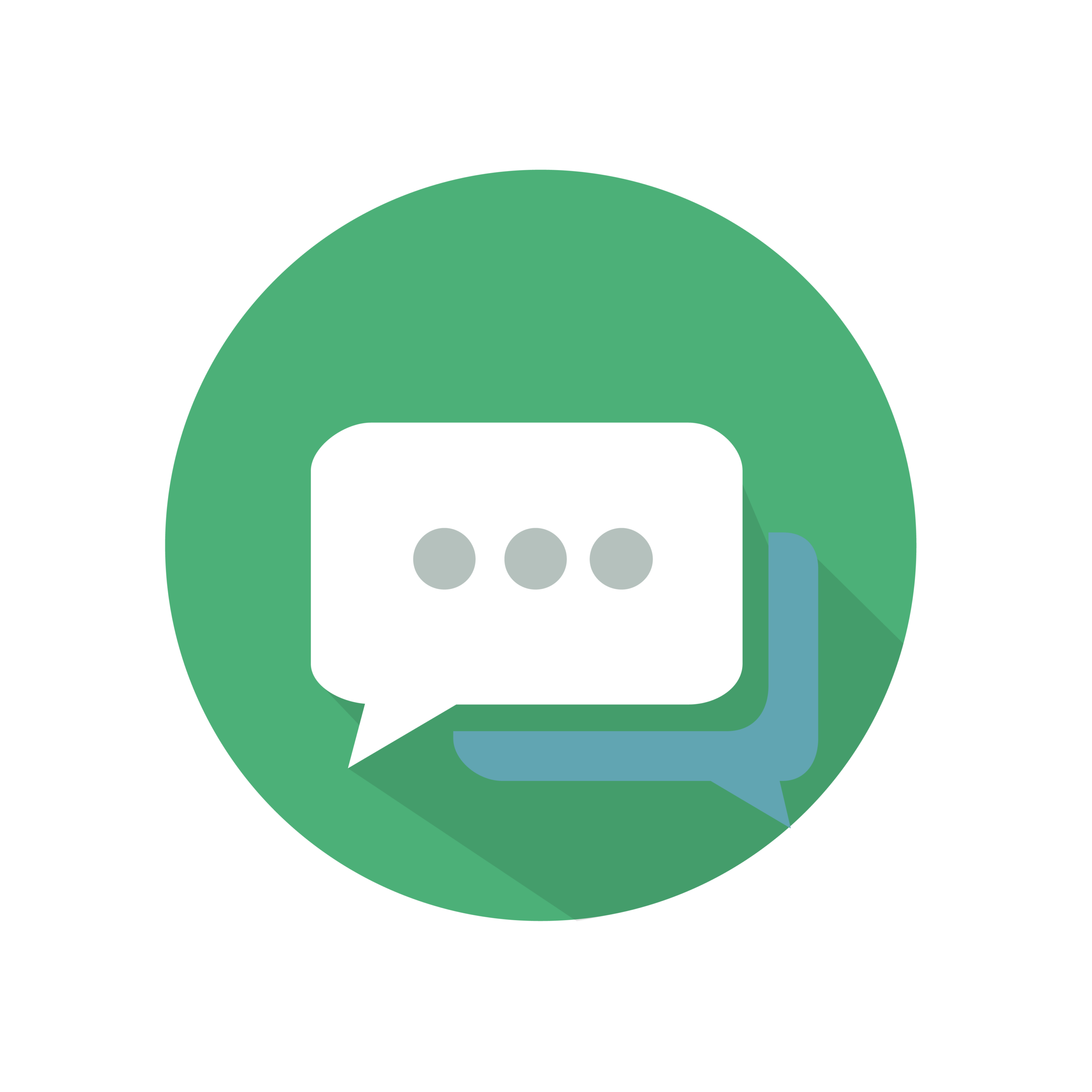-
Services
-
Locations
- Philippines
- United States
- Colombia
- Eastern Europe
Locations -
Industries
-
Resources
- E-Books
- Blog
- Case Studies
Resources - About Us
- Careers
A Complete Guide To Implementing Live Chat, Measuring Performance, and Setting Your Team Up for Success
Introduction
Live chat is becoming one of the most powerful tools in a customer service team’s repertoire. Your customers have high expectations for service, and live chat is rapidly becoming one of the most effective ways for you to meet those expectations.
However, just like any tool, live chat can be misused, and a poorly implemented live chat program can do more harm than good. Slow response times, poorly trained agents, and unhelpful bots can all drive customers away. If you’re going to implement live chat poorly, you’d be better off not implementing it at all.
In this guide, we’ll discuss the benefits of live chat. We’ll help you choose the best live chat software tool for your business and discuss four other critical things you need to consider when implementing live chat. We’ll introduce the customer service key performance indicators (KPIs) that you should be measuring for live chat, and share benchmark data that Peak Support has collected from more than 250 different sources.
Why Add Live Chat Customer Support?
Customers love live chat. In fact, customer satisfaction ratings average 92% for live chat customer support – higher than the customer satisfaction ratings for any other channel. Here are a few of the reasons why.

Respond Instantly
Instant gratification is the new norm for customers across the world. “If you aren’t responding to your customers’ concerns and feedback right away, chances are high that your customers will take their business elsewhere,” Small Biz Club says.
For comparison’s sake, consider how an emailed query will often go unanswered for 24 hours or more. Email remains the most commonly used customer service channel, with 54% of consumers using email for customer service issues in the last year, but it does not meet the growing need for immediacy.
With live chat, by contrast, a customer query can be—and often is— answered in just a couple minutes. This is a dramatic improvement over other customer support channels, as the following graph from SuperOffice makes clear.


Have a Conversation
Unlike email, where a single customer query could require 2-3 emails (or more) to be fully resolved, live chat allows for immediate back-and-forth that dramatically speeds up the problem-solving process. It also makes it easier to establish a personal connection, as live chat encourages natural conversations compared to the detached and delayed communication of email. And the more conversational your customer support is, the more human (and effective) your service will be. Similar to a phone call, live chat prioritizes conversation and fast replies. However, chat is easier for many people because it allows for multitasking and doesn’t require finding time to actually pick up the phone and call.

Reduce the need for phone support
If you’re already offering phone support, live chat might offer a better alternative, depending on the needs of your company.
Phone support is hard to do well – it requires having enough agents available to answer all the calls that can come in at any time. Otherwise, customers will either hear a busy signal or be left on hold. Neither are a good option. With live chat, agents can handle multiple chats at the same time (usually around three chats per agent, depending on the complexity and their experience). This means that customers get answers faster than they do over the phone.
Live chat also offers the benefit of multimedia. Customers can copy and paste in error messages, code samples or (depending on the provider) screenshots of what they are seeing. You can jump into a co-browsing session to see what customers are seeing in real time. You can share a knowledge base article for customers to work through in their own time. All of this is a much better experience for customers than trying to explain something technical over the phone.

Drive Revenue
Using live chat for sales, as well as support, can be extremely profitable. Live chat provides you with an opportunity to talk to customers at the exact moment when they may be considering a purchase.
In fact, 51% of customers are more likely to purchase from your company if you provide live chat support. Forrester reports that web visitors who use live chat are not only three times more likely to convert into customers; they’re also likely to spend up to 60% more.
And live chat can also increase sales from your existing customers. For example, an agent could suggest a related product to a customer during their interactions, or describe the benefits of upgrading to a premium plan.
How To Implement Live Chat
If you’ve decided that live chat is a good fit for your customer service team, there are a few things to do before launching. If you’ve already launched chat support, revisiting this checklist can help identify opportunities to improve your existing strategy.
Choose the right live chat software
The first thing on your to-do list is to find the right live chat software tool for your needs. If you’re already using a help desk, it’s usually easiest to see if their built-in chat tool will do what you need. However, if their solution doesn’t provide all the options you need, there are a ton of other tools out there. We’ve written detailed reviews of seven of them.
There are nine important features to consider when evaluating a chat tool. You might need all of them, or you might find some of them are not important to your workflow. Other features, like the available integrations, will depend on the other tools you already use.
- Chat transfer: the ability to transfer a chat from one representative to another, or between teams.
- Integrations: the other products or services that a chat tool has a functioning connection with. If you can send information back and forth between the two, it is an integration. Not all integrations look the same though – so if there’s a specific thing you need it to do (like update in real-time), make sure you check it works.
- Chat transcripts: the ability to access historical information and transcripts about past conversations.
- User tracking/profiling: the ability to label new users with specific targeting segments, or see what pages they’ve previously visited. For example, some companies choose to target chat to only paying, logged-in customers.
- Customization and branding: the ability to customize your chat windows and surveys to match the theme of your website.
- Mobile or tablet app: a dedicated mobile or tablet application for agents to reply to chats through.
- AI/Chatbot: whether or not the service provides a chatbot or artificial intelligence features.
- Surveying Options: if the chat service is able to offer pre- or post-chat surveys, such as CSAT or NPS.
- Auto-forwarding: if the service offers the ability to automatically forward tickets to another service or email address during off hours.
You can read our full review of seven live chat software tools here.
Build your chat workflow
Especially if you’re just offering chat support for the very first time, you want to be specific about how you deploy it. Putting a chat widget on every page of your website or app, and turning it on 24 hours a day, is a sure-fire way to create chaos, if you aren’t prepared for it. Here are three things to consider:
- Decide where your live chat widget should go. This will depend on the reason why you’re offering chat. If it’s to reduce your shopping cart abandonment rate, then start by offering live chat on your checkout page. If it’s to help customers get faster support, try offering it in-app or on your Contact page.
- Determine what hours you’ll offer chat. Chat doesn’t have to be turned on 24/7, even if your team operates on that schedule. You can start just by covering weekday business hours, and expand from there. And keep in mind: Unlike email support, you can always turn chat off. If the volume gets too high, or an agent is out sick, leave an offline message and let your agents focus on the email queue.
- Build your offline workflow. Decide what your customers will see when there are no agents available to chat. Give them the option of emailing their question to your team. Then set expectations as to when your chat will be back online, or when they will receive an email response to their question. Be specific about the next steps required for customers to get the help they need.
- Determine escalation pathways. If a customer’s question can’t be answered immediately, how do agents move the conversation to another team or to another channel to follow up later?
Train your agents
Chat is more difficult than email, as it requires agents to handle questions in real-time. Often, agents can’t fall back on templated responses. Let them handle email for a while first, and get a great understanding of the different questions they might be asked. Then make sure they’re fully trained and prepared to launch chat. When an agent is just starting out on live chat, you can have them share the chat link with a team lead or experienced agent who can watch the chat in real time.
Schedule your team
Focus on smart scheduling. It sounds obvious, but it bears reminding: if chat is on, make sure someone is on duty. That means that if your primary chat agent goes on lunch break, someone else needs to cover for them. If you don’t have coverage, turn chats off. With small teams, it can be easy to forget this. But if you leave chat on and no one responds, your customers are going to be frustrated.
And when chat is turned on, make sure you name a point person who is always watching the queue. In small teams, agents often cover multiple channels at once, sometimes handling customer support via email, phone, chat, and social media. If chat is everyone’s problem, it becomes no one’s problem. Ideally, you should have at least one agent dedicated to monitoring the chat queue, so no chats are missed.
Consider using bots (with caution)
Chatbots have their benefits, but they typically can’t answer complex questions. And they can’t fulfill customers’ need for the human touch. A chatbot that returns articles from the company’s self-help knowledge base may enrage your customers, rather than helping them. If you want to deploy a chatbot, do it carefully and be aware of its limits. We recommend always having the option to transfer to a human agent.
Customer Service Key Performance Indicators for Live Chat
Once you’ve launched your live chat channel, tracking key performance indicators (KPIs) is vital for managing the performance of your customer support team.
Peak Support has collected benchmark data for customer service KPIs from more than 150 sources. Below, we describe the most important customer service KPIs for live chat, share the data we have on how well other companies perform and provide our recommended targets for each KPI.
Live Chat KPI #1: Average Wait Time on Live Chat
Wait time is perhaps the most critical metric for live chat. After all, customers like live chat because of the immediacy it provides. According to Inc.com, “42% of consumers say that they prefer live chat functions because they don’t have to wait on hold.”
Put yourself in the customer’s position: You reach out to a chat agent and receive no immediate response. So you click over to your email. Then you click back to the website. Still no response. Now you have to decide whether to keep waiting around, abandon your question, or just send an email. The company has made your life more difficult, not less.
So how quickly do you need to respond? Here’s what we found in our benchmark study:
- Number of data points found: 27
- Highest wait time: 25 minutes
- Lowest wait time: 15 seconds
- Average wait time: 1 minute 58 seconds
On average, as you can see, companies take about two minutes to respond. But that’s probably too long. According to Bold360, customers will wait for less than a minute for a response. If you offer a pre-chat form – a series of questions they need to answer before the chat begins – they’ll wait 54 seconds. But without a pre-chat form, they’ll wait only 20 seconds for a response.
We recommend aiming to respond in 20 seconds or less, a minute at most. If you’re taking 20 minutes to respond, there’s no point in doing live chat at all.
Live Chat KPI #2: Missed Chats
Missed chats are conversations that come in when your agents are on duty but that never receive a response. Every time you miss a chat, you may be losing a customer.
We didn’t find enough data on missed chats to include it in our benchmark study, but ideally, you’ll have close to zero missed chats. Think of a missed chat as a phone call that’s never answered or an email that’s ignored. In fact, with our clients, we aim to look at every missed chat, ask what happened, and then fix the problem for the future.
Live Chat KPI #3: Average Handle Time on Live Chat
Average handle time (AHT) is the average amount of time your agents spend resolving customer questions via live chat.
This is a tricky KPI to track. If AHT is included in agent’s performance scorecards, you could compromise quality, as agents will rush to get customers off the line. Like Zendesk says, “It’s extremely important that agents don’t hurry customers off the phone to decrease their AHT, even if part of their responsibilities include reducing it.”
Here’s what we found in our benchmark study:
- Number of data points found: 45
- Highest AHT: 29 minutes
- Lowest AHT: 1 minute
- Average AHT: 13 minutes
Ultimately, the best thing you can do is stress to your agents that they need to spend as much time as is necessary to resolve a customer’s inquiry in an efficient, satisfactory way. This will look different for each company, so keep track of your average handle time, assess the results, and then determine a target that works for you.
Live Chat KPI #4: Customer Satisfaction on Live Chat
With any customer service channel, customer satisfaction (CSAT) is the bottom line. This is the average rating your customers give your service team for your chat support, based on surveys sent after queries are resolved.
Here’s what we found in our benchmark study:
- Number of data points found: 30
- Highest CSAT: 96%
- Lowest CSAT: 75%
- Average CSAT: 85%
While 85% is average, we typically recommend that companies strive for 90% or more. For example, one of our clients regularly receives scores of 95% and even 100% on its weekly CSAT report. Achieving such a high CSAT is difficult, but it’s doable, with the proper policies, the right staffing, a robust training program, and excellent team culture.
Live Chat Outsourcing in the Philippines
If you want to implement live chat, but don’t have the capacity in-house, outsourcing is a great option. There are several benefits to live chat outsourcing:
- Expertise. An outsourcer can help you set up chat support from scratch, set KPIs, and more.
- Talent. An outsourcer has access to a deep pool of talented customer service agents.
- Speed. An outsourcer may be able to add new agents in as little as a week.
- Price. Outsourcing can often save money, not just on labor costs but also on office space, technology, and more.
You can outsource domestically or internationally. The Philippines, however, are a particularly popular location for customer service outsourcing, including live chat outsourcing. Over the last 20 years, the Philippines has overtaken India as the call center capital of the world, because of the wealth of talent in the country.
At Peak Support, our agents in the Philippines have an average of 8 years of experience working for major outsourcers or directly for large U.S. brands. They are college educated, and speak excellent English, with minimal accents. Our customer service teams can take on email, phone, chat, and social media support, as well as many different back office tasks. We can also cover any shift.
Contact us today if you would like to discuss live chat outsourcing in the Philippines.
Conclusion
Offering customer service via live chat is more critical than ever, as it not only allows your company to connect with customers and respond to their needs right away, but it can also help drive sales and create loyal customers and advocates.
When you take the time to set-up a well-designed live chat system, and staff it with experienced customer support professionals, you can convert casual visitors into customers by connecting with them at the right moment and nurturing them toward a purchase.
Regardless of your industry or company goals, adding live chat to your customer service toolkit can only benefit you. If done right, it can solve problems quickly, increase your customers’ satisfaction, and turn your website visitors into brand advocates.

